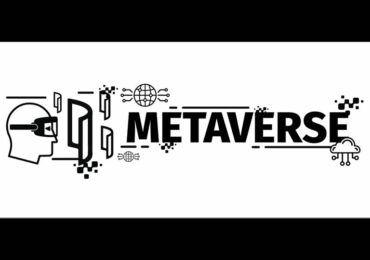The “Kodak moment” is often regarded as a classic example of disruptive innovation brought by Kodak in the camera and film industry as well as digital photography; However, lately, it is often used as an example of a company that failed to recognize the opportunity of digital camera and its impact on the future of camera and film. There are different stories told and much more is to unfold to fully understand the radical innovation behind Kodak, as well as the reasons why the company filed for bankruptcy later on its journey.
Kodak History
Kodak was established in the late 19th by George Eastman under the name “Eastman Dry Plate Company” in Rochester, NY. George Eastman was a serial innovator and entrepreneur, able to innovate across the industries and who radically disrupted the industry by identifying and innovating for the underserved camera and photography market. He is often named as the pioneer who made photography available for amateurish mass-market, as well as home video and Hollywood movies. In 1888, the name “KODAK” was trademarked, which was the random combination of letters that Eastman came up with and later on, it became one of the most well-known brand names in the world. The same year, the first camera with 100 paper films was launched by Kodak, revolutionizing photography and film and making photography available for everyone. Kodak continued revolutionizing the film industry and managed to find its way into healthcare (X-ray imaging), graphic arts and printing. Additionally, many other industries were created by it. With heavy investment in R&D, it launched its first pocketable camera and quick functioning camera “Brownie”, the latter being so fast that it gave inception to the word “snapshot”, which is widely used in our everyday lives today. Kodak also was a pioneer in launching the first colour film “Kodachrome” which was widely adopted by Hollywood and the mass public, allowing people to enjoy colourful photography. It is also worth mentioning, that in 1969, the first ever photo of earth from deep space, which was taken by the astronauts of the Apollo 11, was shot by the camera that was produced by Kodak. Kodak was truly proving its tagline of “share memories, share life” by making photography accessible for everyone.
It is important to mention that Kodak’s business model – “razor and razorblades” was working very well. It was working so well, that by 1970 it occupied 80% of the photography industry global market share. Its business model was making cameras affordable and portable, having low margin profits on cameras, while for accessories that were needed for the camera (i.e. printing sheets, films, etc) it had a very high margin, compensating and profiting from its products.
Potential reasons of failure
Huge success has never stopped the company from innovating. During our interview, Kodak’s marketing director and its worldwide solutions business manager, professor Andy Lawrence mentioned that even in 1990 Kodak was already a digital company, using all the available modern technology to innovate and introduce advanced image management systems, document scanners, storage systems, and other software portfolios. Furthermore, Kodak’s electrical engineer was the one that created the first digital camera. However, management told him “That’s cute, but don’t tell anyone about it.” – and that turned out to be one of the biggest mistakes for Kodak. Ironically, the creators of the digital cameras were the ones that fully missed the changing market needs and all the opportunities that technology was to bring about. Not being ready to give up their existing business model and not being fast and flexible enough to follow the new trend on the market acted as predicaments for Kodak’s downfall. Professor Lawrence revealed that the products that he was responsible for enjoyed a 85% profit margin in the media the products consumed (when on average, very successful companies’ only make 20% on average). This explains, why could it have been so hard for Kodak to give up the well-established, “money-printing” business model, that it has been using for more than a century. Kodak contradicted the ideology that made the company successful in the first place – identifying and observing the trends while innovating and serving the market. Instead of that, what Kodak did, was trying to force its views and beliefs about people loving printed images and always choosing them over anything digital.
Some blame it on myopia, stating that Kodak was so blinded by their successes that they failed to recognize the rising market demand on their own invention – the digital camera. Others argue, that Kodak experienced cognitive inertia and was not ready to build upon new technology and failed to utilize the radical change that happened in the industry. Some others blame it on mismanagement of investments, while some say that they lacked capabilities in newly established technology. While the reason why Kodak did not use the opportunity can be the combination of all of these mentioned above, the fact remains that the company did not fail to identify the opportunity that disrupted the market – on the contrary, they were the ones that innovated and launched the technology. In other words, Kodak did not miss the opportunity, they chose not to go with the opportunity.
Once, the technology was out there, other incumbent companies, such as Fuji films, Agfa-Gevaert and others lagging behind Kodak, realized the opportunity and acted on that more proactively than Kodak did. That leads us to the other important mistake that Kodak made: being anchored in the past, fully ignoring its customers’ and media’s feedback, losing a decade for arguing and forcing its film to the market and its competitors rather than trying to use the opportunities brought by the digital cameras. As Professor Lawrence put it during the interview “The problem was that what they were trying to do, was to save the business model (razor and razor blades) which has been the crucial part of the company identity for more than 100 years. The fact is that business models emerging in the digital transformation would not support the profit margins that the company was used to… This together with protecting the employees impacted their investment strategy.”
Even though, later in 2004, Kodak realized that the change was inevitable and they stopped production of film cameras, the damage done was already huge and competitors were also very well established. Around 15,000 employees were made redundant which further negatively impacted on the inner culture and spirit of the company, making it more prone to failure. Kodak got out of the business and tried to enter commercial and later consumer printing. But it could not save the company from bankruptcy. According to Professor Andy Lawrence, the problem with printing and other vertical market applications was that they were constrained by the cash cow status – Implying, that they were not deemed big enough and not aligned with the print strategy.
After several failed initiatives of entering new markets, in 2012, Kodak filed for bankruptcy protection, which allowed the company to reorganize and continue functioning on credit. Consequently, selling its patents also allowed it to gain further finance and in 2013 it emerged from bankruptcy protection. Today Kodak is truly a print company.
Lessons learnt/What could have been different?
This case is an interesting example of how major breakthrough in technology can be a big deal, but at the same time how it never guarantees the success of the company. It came another way around for Kodak, competitors made better use of its innovation than it did on its own (taking into account that for its competitors’ entry barriers were comparably lower in the digital industry compared to its film industry, which required higher technological expertise and experience); Suggesting the importance of adapting and building upon all the changes that the new technology brings; It can be argued that Kodak failed to understand that digital camera and online photo sharing was a new business, requiring completely different methods and strategy, not just approaching it as an extension of the printing film business. It further shows, that even the leader of the industry and innovator of the technology with all the capabilities and resources that Kodak had is as vulnerable to failure as a new startup when its entering the market for the first time. This case also outlines how cognitive inertia, or in other words strong desire to save an existing profitable business model may turn out as being fatal for the company.
All of it further portray the importance of putting change at the top, having an organizational structure that supports innovation and change, being open to failures and having an open eye for all technological advancements happening not only in your industry but also in all related and unrelated industries, as you never know from where the opportunities will be coming from. Such is the story of Kodak – a multibillion dollar company that revolutionized film and photography and many other industries, and which failed due to cognitive inertia, mismanagement of its investments, lack of capabilities, and inability to manage its business model; However, as professor Andy Lawrence put is “After more than 140 years Kodak is still around. I would call that a success.” So, it is up to you to decide which version of the Kodak story would you want to tell.
















